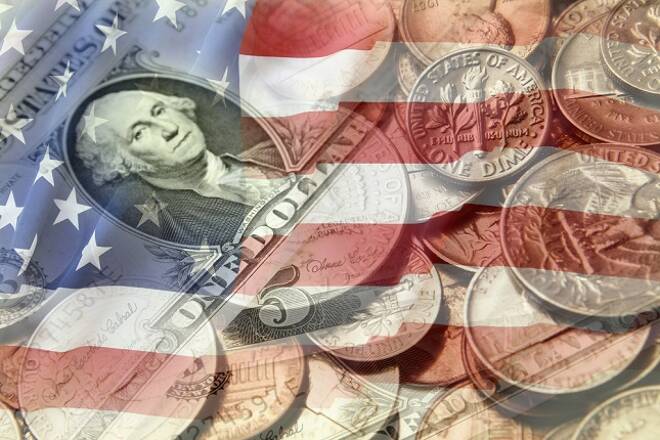Advertisement
Advertisement
Rate Hike Expectations Support Dollar, but Fed Members Express Concerns Over Trade War Impact on Economic Growth
By:
The Greenback was primarily supported by the divergence in monetary policy between the hawkish U.S. Federal Reserve and other less-hawkish and dovish central banks. Federal Open Market Committee member Raphael Bostic said he may rule out a fourth rate hike this year if trade issues start to negatively affect the economy.
The U.S. Dollar recovered from early weakness against a basket of major currencies last week to test its highest level since June 27, 2017 before weakening into the close. The Greenback was primarily supported by the divergence in monetary policy between the hawkish U.S. Federal Reserve and other less-hawkish and dovish central banks. The index was mostly driven lower on Friday by a strong recovery in the Euro.
For the week, September U.S. Dollar Index futures settled at 94.349, up 0.169 or +0.18%.
The catalysts driving the price action in the U.S. Dollar ranged from lingering concerns over a trade war between the United States and its major trading partners, China and the European Union to U.S. economic data to Fed member comments.
After opening the week under pressure, the dollar rallied against a basket of major currencies as lingering global trade tensions prompted traders to ditch most high-yielding currencies and investor focused on expectations the Federal Reserve will continue to raise interest rates.
Volatility hit the equity markets once again on conflicting signals from the Trump administration over proposed restrictions on foreign investment in U.S. technology companies, along with signs that the recently imposed import tariffs are starting to disrupt supply chains.
In economic news, orders for long-lasting U.S. factory goods declined for the second straight month in May, as demand for cars, metal products and aircraft fell.
The Commerce Department said Wednesday durable goods orders dropped 0.6 percent last month. That followed a steeper drop of 1 percent in April. On Thursday, the Commerce Department reported that U.S. first-quarter growth slowed more than estimated. Gross domestic product increased at a 2.0 percent annual rate in the January-March period, instead of the 2.2 percent pace it reported last month.
Consumer confidence fell well below economists’ expectations in June, fueled by a bleak outlook for U.S. economic conditions. The Confidence Board’s index dropped to 126.4 from a revised 128.8 in May. The index was expected to hit 128.1.
Additionally, Dallas Fed Bank President Robert Kaplan said he believes the U.S. central bank’s monetary policy is still accommodative and suggested the Fed could raise rates at least two more times before it stops being accommodative. However, Federal Open Market Committee member Raphael Bostic said he may rule out a fourth rate hike this year if trade issues start to negatively affect the economy.
Forex Markets
The Japanese Yen and Australian Dollars were pressured mostly by expectations of rising U.S. interest rates. This helped widen the spread between U.S. Government bonds and Japanese and Australian Government Bonds, making the U.S. Dollar a more attractive investment. The Aussie was also weakened by trade war concerns with China and volatility in the Yuan.
The New Zealand Dollar tumbled in reaction to dovish comments from the Reserve Bank of New Zealand.
In a widely expected move, the Reserve Bank of New Zealand decided to leave its benchmark interest rate unchanged at 1.75 percent. The tone, however, of the RBNZ rate statement suggested the central bank looks to be leaning towards a more “dovish” stance in response to weaker-than-expected growth numbers.
Traders are saying they knew that rates would stay the same, but they were surprised by the grim tone of Reserve Bank Governor Adrian Orr’s comments. Based on his comments, traders are now saying that a rate hike is a long way off, but the chances of a rate hike cannot be eliminated.
About the Author
James Hyerczykauthor
James Hyerczyk is a U.S. based seasoned technical analyst and educator with over 40 years of experience in market analysis and trading, specializing in chart patterns and price movement. He is the author of two books on technical analysis and has a background in both futures and stock markets.
Advertisement
